Knowing what to wear kayaking can mean the difference between having a fantastic time and having a miserable experience. No one likes the feeling of being cold or wet… or getting hypothermia!
Choosing what clothing to wear on your kayaking trip can seem overwhelming, however, there are a myriad of different types of kayak clothing on the market, too. And it can be difficult to know exactly what you need to keep safe and comfortable, no matter what the conditions are.
Well, worry no more! We’ve pulled together this guide to show you the way. In it, you’ll find the best advice on how to prepare for your journey and anticipate what kind of clothing you’ll need, plus tips for how to stay safe and comfortable if the weather is scorching hot or bitterly cold.
Disclaimer: We use affiliate links and may receive a small commission on purchases.
What to wear kayaking: dress for the conditions
It might sound obvious, but the secret to dressing correctly for kayaking is all about anticipating the conditions you’ll be kayaking in. It’s essential that you do a little research before setting off on your journey to pin down what the weather and water temperatures will be like. That way, you won’t be caught when the skies open up halfway down the river.
Figure out the weather conditions for the area you will be paddling in
The first thing to consider when planning your kayaking adventure is what the ambient conditions will be. Preparation is important to both enjoying the experience of kayaking and dressing appropriately.
Your first port of call should be to check the weather forecasts for the area. When checking the forecast, remember to check for the entire day and to check both upstream and downstream when kayaking a river. Rainfall that is miles upstream from your position can significantly change the speed and difficulty of the section you’re currently kayaking. If you’re not aware of the risks, you can’t take steps to mitigate them. If you’re sea kayaking, you can find a map of coastal water conditions here.
Once you have an idea of the weather and water temperatures you’ll be facing, you’ll need to assemble clothing to suit that environment. For example, if you’re heading out to extremely cold water then you’ll need a drysuit rather than a wetsuit. This is because a wetsuit uses a layer of warm water between your skin and the suit to provide you with insulation, which stops working if the temperature dips below 45 degrees Fahrenheit. You may have to make a special shopping trip to purchase these specific items but, as a rule, most kayak appropriate clothing can be acquired through your local outdoor sporting goods store or online.

What type of paddling will you be doing
How you dress and what kind of gear you bring with you depends heavily on what type of paddling you’ll be doing. Long trips in a touring kayak will require different clothing to the frantic paddling of whitewater kayaking. Before you plan your gear list, take a moment to look at what kind of kayaking you plan to do. This is especially important in environments like rivers, where you might experience distinctly different conditions along your journey.
It’s also important to take into consideration the amount of physical exertion you’ll be experiencing during your trip. Kayaking is a physical sport, but some activities, such whitewater kayaking, are more demanding than others. Short periods of intense paddling, followed by periods of rest, can build up high levels of perspiration in your clothing, especially if you are wearing a drysuit. If your clothing isn’t high wicking, this moisture will be absorbed by your clothing, significantly reducing its ability to keep you warm. Sometimes it’s best to combine clothing developed for warm weather, such as high wicking fabrics, with cold weather gear, like a drysuit, to get the best fit for your chosen activity.
Type of kayak you will be using? Sit-in or sit-on-top
Another consideration to factor into your planning is what type of kayak you’ll be using. Sit-on-top kayaks have certain advantages in warmer climates where they offer greater ventilation, but you’ll definitely get wet in them. Sit-in kayaks, on the other hand, are more often found in colder environments where they can be fitted with a spray skirt for added warmth.
Footwear
Specific footwear for kayaking generally falls into two types, neoprene boots and fast drying shoes made from hard wearing materials such as polyurethane or nylon. In mildly cold water neoprene offers the best protection from the cold. In very cold waters you’ll need to wear a drysuit and these usually come with built in boots to keep the entire suit fully waterproof.
When you’re kayaking over warmer waters fast drying footwear is ideal, as it allows your feet to breathe and quickly drains out any water that might find its way into your shoes. When looking for kayaking shoes, prioritise styles with a chunky rubberised sole as this will protect your feet when entering and exiting your kayaking, and help to stop you from slipping on areas of wet rock.

Kayaking in cold weather
Kayaking in cold waters is a chance to take in a range of unique vistas, from winter coastlines to frozen lakes, but it comes with its own range of unique challenges. Depending on the temperature of the water, even short periods of immersion can significantly lower the body’s core temperature, potentially leading to the very quick onset of hypothermia.
In areas of mildly cold water and cool weather, where the temperature is still cold enough that long term immersion could be problematic, most kayakers wear a combination of waterproof outer layers, such a jacket and pants, over thermal thermal clothing. It’s best to bring a change of clothes when heading out over this kind of water, as the quickest remedy for unexpected immersion in mildly cold water is immediately change out of any wet clothing. If you’re heading out over extremely cold water, especially in colder climates or out at sea, you’ll need to invest in specific equipment to stay warm.
Thankfully, there is a range of clothing and equipment that can be used to keep a kayaker safe and warm, no matter how cold the water is. By combining items from the list below, you can keep your core and extremities warm, even if accidentally immersed, and avoid becoming overheated while paddling.
Kayak clothing for cold weather
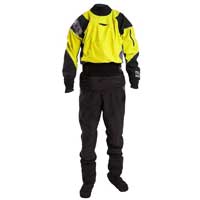 Drysuit: A drysuit, unlike a wetsuit, provides total waterproof cover for the kayaker’s body. Normally made of vulcanised rubber or laminated nylon, the drysuit is sealed at the wrists, feet, and neck. As the drysuit is totally waterproof and does not require a layer of water to keep the wearer warm, it continues to function in water temperatures below 45 degrees Fahrenheit. The drysuit itself provides no thermal protection and must be combined with thermal clothing to keep the kayaker both warm and dry. When selecting a drysuit, be sure to look for one that is specifically designed for kayaking, as diving drysuits often have air gaskets that be uncomfortable in the confines of a kayak.
Drysuit: A drysuit, unlike a wetsuit, provides total waterproof cover for the kayaker’s body. Normally made of vulcanised rubber or laminated nylon, the drysuit is sealed at the wrists, feet, and neck. As the drysuit is totally waterproof and does not require a layer of water to keep the wearer warm, it continues to function in water temperatures below 45 degrees Fahrenheit. The drysuit itself provides no thermal protection and must be combined with thermal clothing to keep the kayaker both warm and dry. When selecting a drysuit, be sure to look for one that is specifically designed for kayaking, as diving drysuits often have air gaskets that be uncomfortable in the confines of a kayak.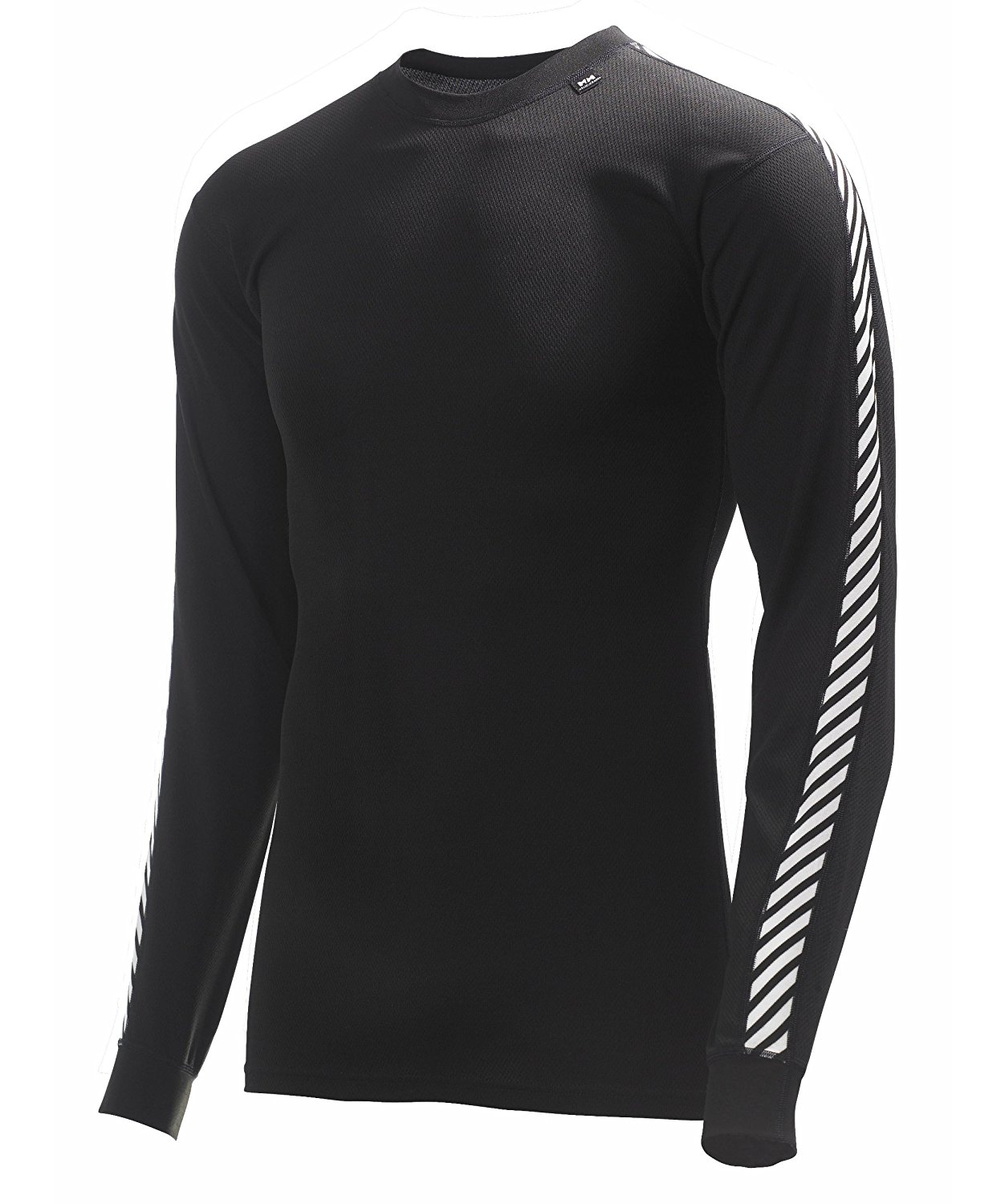 Thermal base and mid-layers: Worn underneath a drysuit, thermal base and mid-layers use thermally reflective materials, such as polyurethane, to keep you warm. When looking for thermal clothing, prioritize items which are made of a high-wicking materials. Wicking fabrics use capillary motion to spread moisture out over the largest possible area, allowing sweat to evaporate and keeping you from becoming overly sweaty when paddling.
Thermal base and mid-layers: Worn underneath a drysuit, thermal base and mid-layers use thermally reflective materials, such as polyurethane, to keep you warm. When looking for thermal clothing, prioritize items which are made of a high-wicking materials. Wicking fabrics use capillary motion to spread moisture out over the largest possible area, allowing sweat to evaporate and keeping you from becoming overly sweaty when paddling.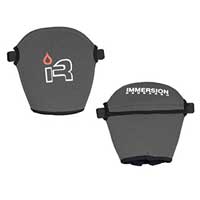 Pogies: While gloves are often used in kayaking to keep the hands warm or to protect from abrasion, pogies are specifically designed to protects the hands in cold weather. Attached to the paddle, these thermal hand-sheaths can be worn in conjunction with gloves to protect your extremities in particularly low temperatures.
Pogies: While gloves are often used in kayaking to keep the hands warm or to protect from abrasion, pogies are specifically designed to protects the hands in cold weather. Attached to the paddle, these thermal hand-sheaths can be worn in conjunction with gloves to protect your extremities in particularly low temperatures.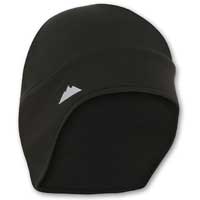 Thermal hat, buff, or face mask: A significant amount of the body’s heat is lost through the head, and your face is one the areas most vulnerable to the cold, so protecting both should be a priority. A thermal hat and face mask will keep you protected while also being easy to remove if you need to cool down.
Thermal hat, buff, or face mask: A significant amount of the body’s heat is lost through the head, and your face is one the areas most vulnerable to the cold, so protecting both should be a priority. A thermal hat and face mask will keep you protected while also being easy to remove if you need to cool down.
Tips
- Always remember to dress for the temperature of the water. Deepwater, such as larger lakes, can continue to be cold even in the hottest months.
- If possible, bring a second set of thermal clothing with you in a waterproof dry-bag. This will allow you to have warm, dry clothing on hand in the event of a spray-skirt or drysuit failure.
- Learn how to treat cold-related conditions, such as frostbite and hypothermia. If you and the rest of your group are aware of how to combat these kinds of situations, then everyone in the group is a little bit safer.
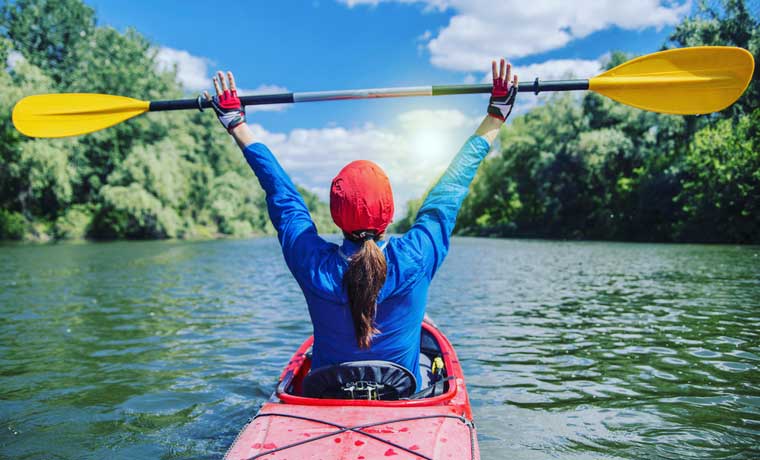
Kayaking in warm weather
While it’s easy to assume that no special clothing is needed for kayaking in warm weather, there are still steps you can take to keep yourself comfortable and avoid common risks such as dehydration, heat stroke, and sunburn.
Kayak Clothing for Warm Weather
 Wide-brimmed hat: When kayaking in direct sunlight, it’s always wise to invest in a wide-brimmed hat to protect your scalp and face. Your scalp is the most likely area for kayakers to get a serious sunburn as it is difficult to apply sunscreen there. Covering you head with a hat will protect from overexposure to the sun, while also helping to keep you cool.
Wide-brimmed hat: When kayaking in direct sunlight, it’s always wise to invest in a wide-brimmed hat to protect your scalp and face. Your scalp is the most likely area for kayakers to get a serious sunburn as it is difficult to apply sunscreen there. Covering you head with a hat will protect from overexposure to the sun, while also helping to keep you cool.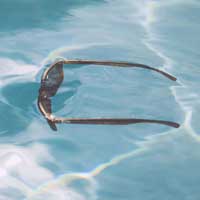 Sunglasses: While wearing sunglasses on a sunny day might seem obvious, they serve a secondary purpose when kayaking. Sunlight reflecting off water can sometimes irritate the eyes and produce a condition similar to snow blindness. Polarized sunglass will prevent this from happening; just remember to attach a float to them in case they take a surprise trip over the side.
Sunglasses: While wearing sunglasses on a sunny day might seem obvious, they serve a secondary purpose when kayaking. Sunlight reflecting off water can sometimes irritate the eyes and produce a condition similar to snow blindness. Polarized sunglass will prevent this from happening; just remember to attach a float to them in case they take a surprise trip over the side.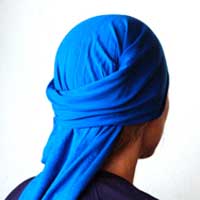 Buff or sun mask: A good sun mask should be breathable, comfortable, and UV resistant. They help to protect the face from sun exposure, avoid water glare, and protect the face from salt irritation in coastal conditions.
Buff or sun mask: A good sun mask should be breathable, comfortable, and UV resistant. They help to protect the face from sun exposure, avoid water glare, and protect the face from salt irritation in coastal conditions.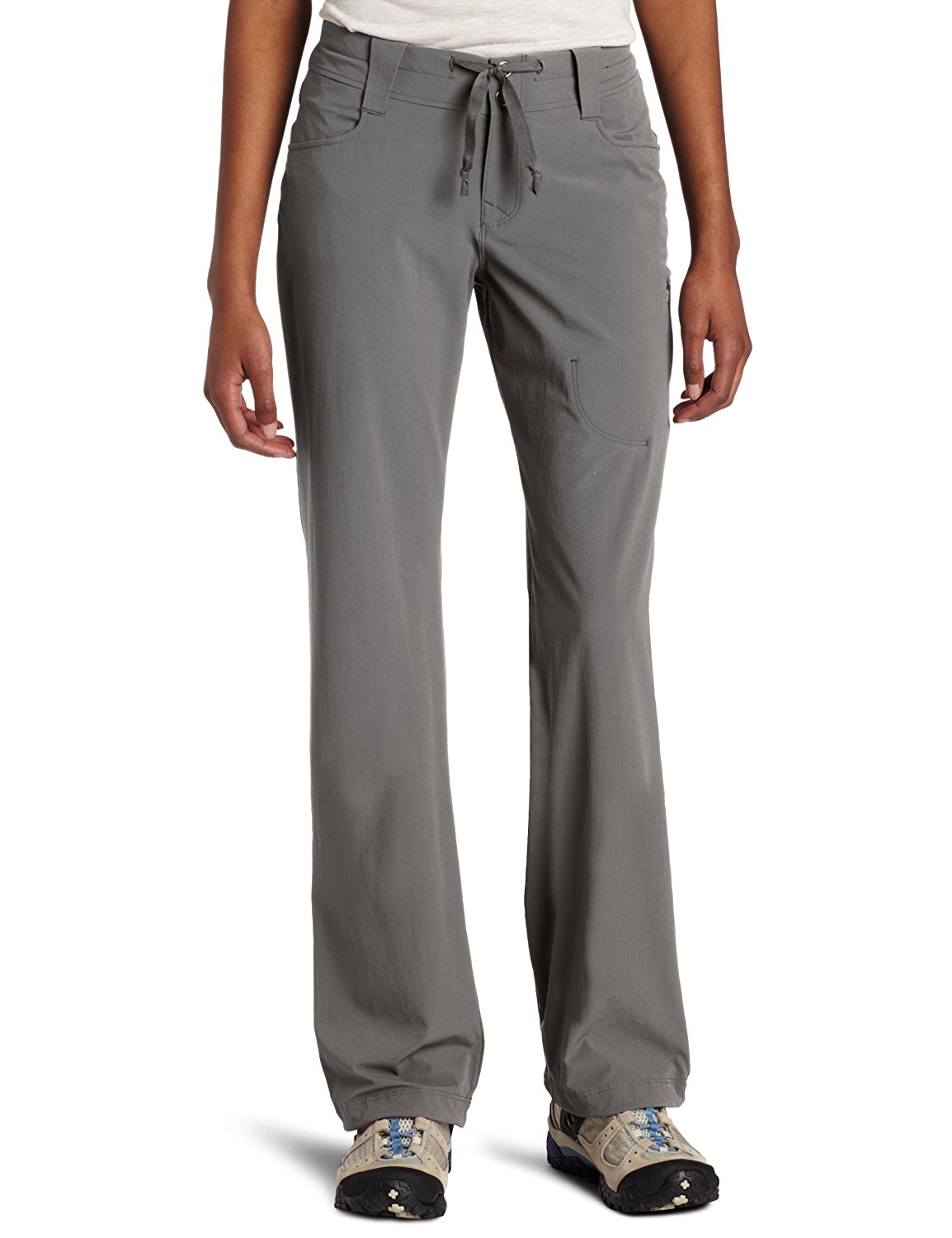 Long sleeves and trousers: Wearing clothing that provides more coverage might seem counterintuitive in hotter weather, but it is the best protection against sunburn and, ironically, overheating. Clothing designed specifically for sport or outdoor activities is often UV resistant, high wicking, fast drying, and well vented. Selecting the proper attire will keep your cool, dry, and protected from the sun.
Long sleeves and trousers: Wearing clothing that provides more coverage might seem counterintuitive in hotter weather, but it is the best protection against sunburn and, ironically, overheating. Clothing designed specifically for sport or outdoor activities is often UV resistant, high wicking, fast drying, and well vented. Selecting the proper attire will keep your cool, dry, and protected from the sun.
Tips
- Remember to stay hydrated! Kayaking is a physical sport and it’s essential to carry enough water with you to keep from becoming dehydrated, especially in hot conditions.
- Avoid cotton clothing. While cotton has reputation as being a cool material, it actually holds moisture when you perspire. In particularly hot weather, or after some vigorous paddling, cotton clothing can become clammy and uncomfortable. Instead of cotton, look for high-wicking sports fabrics .
- Wear a hat. Because of the exposed nature of kayaking, sunstroke is a real risk. Even though it seems counterintuitive, covering up can sometimes be the best way to stay safe in the sun.
- Wear sunscreen. Sunburn can really ruin your day, and a severe case of sunburn can put you at risk. It always best to pack your sunscreen.
Dress to impress
Going kayaking is a fantastic adventure, and the last thing you want is for it to be ruined because you’re cold and wet or sweaty and overheating. Picking the right clothing for your journey doesn’t have to be a struggle, just remember:
- Plan ahead: Do your research on where you plan to kayak beforehand. Keep an eye on the weather forecast and the water conditions, and it should be fairly obvious what kind of clothing you’ll need.
- Keep checking: Have a way to stay updated on the weather and check upstream and downstream from where you’ll be. You can be significantly affected by changes in weather that happen miles from where you are paddling.
- Bring the right gear: Look over our checklist of equipment for both hot and cold conditions and remember, when in doubt, bring it with you and store it in a dry bag. It’s better to have extra and not need something rather than to be missing your hat with the full summer sun beating down.
All you need to do is follow these steps and you’ll be more than well prepared for your kayaking journey. Hopefully, you’ll also have the confidence to advise others on what to wear kayaking, especially when they show up in jeans and a cotton t-shirt!




